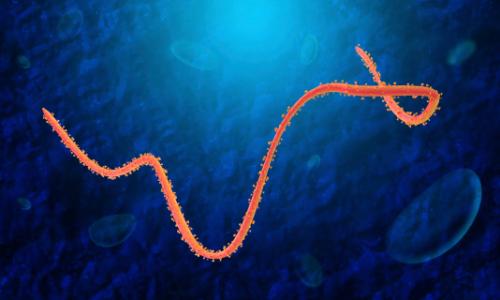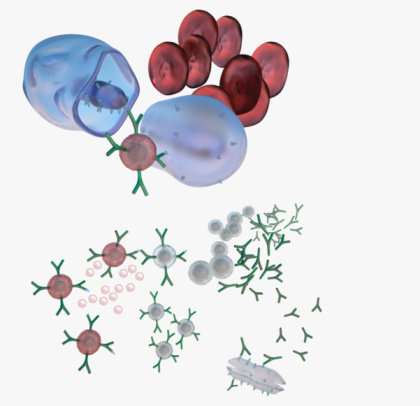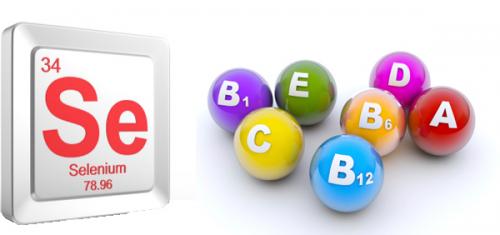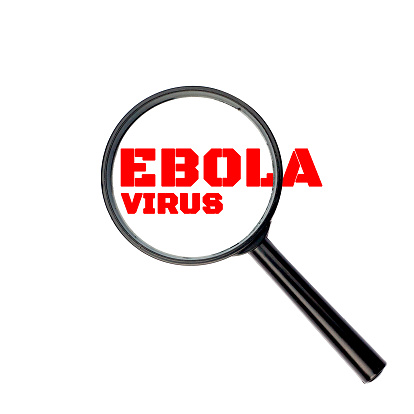By Rob Verkerk PhD
Founder, scientific and executive director, ANH-Intl
As the current Ebola epidemic sweeps across West Africa, wiping out over 50-90% of people in its path, the Centres for Disease Control (CDC) in the US opens the door to “unproven interventions with as yet unknown efficacy and adverse effects, as potential treatment or prevention”.
The kinds of interventions the CDC has in mind are experimental drugs that have yet to undergo clinical testing for safety or efficacy, or ones that are already available on the market but licensed for other purposes. This latter group are rarely free from a list of serious and sometimes lethal side effects.
Firmly on the table is also a vaccine, being developed jointly by the US National Institutes of Health’s Vaccine Research Center (VRC) and the world’s second largest drug company, GlaxoSmithKline (GSK). The company has committed £300,000 to develop the front-line healthcare worker infrastructure in the three affected West African countries; Sierra Leone, Liberia and Guinea. While this is badly needed, it will also mean that GSK has an army of suitable personnel to despatch its vaccine come its planned release in early 2015.

The ebola virus
This all sounds like good planning. Actually, it is. But very large questions hang over how well any vaccine might work, what its side effects might be, how many people will be lost prior to its release, and how effective, or otherwise, other interventions will be in the meantime.
Ebolavirus disables the innate immune response, but also the acquired humoral and cellular responses that lead to uncontrolled viral replication and dissemination. This then leads to a hyper-response from the immune system known as 'cytokine storm'. The hijacking of part of the immune system and over-activity of other parts, contributes to the break down of the vascular system, then, commonly, haemorrhaging and death. Having interacted with medics on the frontlines in recent weeks, a picture is beginning to emerge about the differences in immune status and response between those who are most susceptible, as compared with those able to survive. Many of those who die, put simply, have a more compromised immune system before they are even infected. This may be because they are already malnourished or dehydrated, or both.

An illustration of immune response, involving a chain of defensive white blood cells, triggered by microbes
Previous studies in Gabon have shown that a high prevalence (up to about 20% of the population) of ebolavirus antibodies in healthy populations. This immunity is likely the result of previous epidemics or, more likely, the regular exposure of local populations to the virus, probably via natural reservoir or spillover sources of the virus, such as the hammer-headed fruit bat (Hypsignathus monstrosus) and the little collared bat (Myonycteris torquata). This is thought to be the result of people eating fruit contaminated with bat saliva. This work demonstrates that humans can develop immunity, this of course being one of the justifications for developing vaccines in the first place. But the level of cross-immunity to evolving strains remains somewhat of an open book.
Immune status prior to infection is key
The bottom line is that a person’s health and immune status before becoming infected with Ebola is one of the most crucial elements to their prognosis once infected. Writing in The Lancet, a team of French researchers in Gabon, headed by Dr Eric Leroy stated:
“We have found that immunological events very early in an Ebola-virus infection determine the control of viral replication and recovery or catastrophic illness and death. Recovery from infection is related to orderly and well-regulated humoral and cellular immune responses, characterised by the early appearance of IgM and IgG, followed by activation of cytotoxic cells at the time of antigen clearance from blood. By contrast, fatal outcome is associated with impaired humoral responses and an early activation of T cells unable to control virus replication, followed by considerable intravascular apoptosis.”
Leroy’s team also claims the possibility of asymptomatic human-to-human transmission. This means the virus is present in some people with no evidence of symptoms, being perfectly well managed by the immune system – and then can be transmitted to others in the usual ways, via body secretions. With this in mind, imagine how healthcare workers could become as much part of the problem as part of the solution…
Chris Dye from the World Health Organization is appealing for $1billion to support the fight against Ebola in West Africa. Huge amounts of this needs to be spent on frontline medical staff and nurses, hospital beds, protective clothing and all the other paraphernalia associated with trying to halt the transmission of what is considered to be an untreatable infectious disease while providing palliative care for those infected – and rightly so.
Multi-target therapeutics, naturally
But it beggars belief, given the knowledge of the virus’ workings, that there’s so little effort going towards priming the immune systems of West Africans, in advance of their exposure. Basic vitamins like vitamins A, C and various B vitamins, as well as minerals like zinc and selenium, are cheap and strongly correlated with enhanced immune response and modulation in the event of challenge by life-threatening viruses. Some of these are even more effective when delivered intravenously at extremely high doses, short-term.
Beyond this, functional and integrative medicine has decades of experience with dozens of other naturally-occurring compounds, some produced within the body, others from our diets and environment, that have profound immune-modulating effects. Many of these natural agents are astonishingly relevant to the current crisis, precisely because these molecules are so often multi-target in their function. More to the point, brought together in an integrated treatment and prevention program, their net effect just could be all that is required, helping to turn the most susceptible individuals into more resilient ones. This multi-target function of natural molecules is of course, typically, the diametric opposite of the way in which most patented drugs work, including the latest crop of experimental drugs such as ZMapp.

Vitamins and minerals are strongly correlated with enhanced immune response
The best news we can relay to you at present is that there are efforts being put in place, at the behest of West African governments – not the consortium of international agencies and corporations centrally involved in the current main effort – to trial various therapies of this kind. The bad news is that these trials are all covert, because for them to fly above the parapet would cause them to be attacked and challenged by the international agencies that continue to be deeply in bed with pharma. Such efforts are also often compromised through lack of adequate funding and infrastructure. They are further hampered by their need to be covert.
The choice
It’s a tough ask to suggest that vaccination development, trials and roll-out should be put on hold because of concerns it either won’t work or might cause serious side effects. That’s not what we’re suggesting. What we are suggesting however, is that far more effort be placed on ways of enhancing the human immune system among populations that are at risk of exposure. That includes most people in Guinea, Liberia and Sierra Leone. It also includes all frontline health workers.
In light of the available scientific evidence, it would be a travesty to ignore work of this kind when there is so much research and clinical evidence suggesting that the state of a person’s immune system prior to exposure to the virus is one of the key factor’s determining whether someone will live or die.
How have we strayed so far off course? A few factors have worked together. These include: too much focus on the dead, rather than the survivors; too much effort generating fear for something we think needs a high-tech, patented solution, and; too much control by corporations, including the CDC and their colleagues at NIH, which are set to gain financially by the release of viruses or anti-viral drugs.
Thankfully there are people in West Africa who see through all of this and are doing something about it. It’s just a pity that a small fraction of the huge amount of aid pouring in on the back of the Ebola epidemic can’t yet be diverted to immune support for the masses. We can hope that this will change – in time, and the sooner the better given the continuing and potentially unnecessary death toll.








Comments
your voice counts
15 October 2014 at 7:48 pm
During the plague epidemics of the middle ages there are several accounts of corpse robbers and grave diggers not contracting the disease one consistent factor in these accounts is the eating of raw garlic. I dont suppose the powers to be in the influence of big pharm will be interested in this you cannot patent and make big profits from garlic!
15 October 2014 at 8:07 pm
This is the most compelling, thoughtfully written and balanced view of the present (mostly) missed opportunity to contain the devastating course of this disease, suggesting the relatively cheap and easy solution of using diet and water and supplements to bolster the immune systems of those vulnerable to infection. Distribution would be far more simple than the lengthy and costly process of setting up new specialized clinics--which must proceed regardless. This could vastly reduce the cost of lives and economy by controlling and taming the epidemic, while the currently necessary clinics, symptom screening, and vaccination development continues, regardless. Would that research on the ground could reflect the effectiveness of the brave covert implementation of complementary and preventive supplementation.
15 October 2014 at 8:39 pm
Excellent well balanced article from Rob Verkerk. This pin points some very key things as drug companies rush as usual to cash in on the created hysteria.
A must read. We should be diverting funds to build up these countries so they have better nutrition, clean water, good sanitation, better health care and education, good hospitals, all the things that we enjoy as normal parts of civilization.
I think that billions will be invested not in this sadly but in vaccinations in response to the hysteria. It's big business and the heat is being kept there by the press.
So do read this voice of sanity and get on with life and see what can effectively be done.11232
15 October 2014 at 10:40 pm
Robert, have you considered the possible role of the 1-3, 1-6 beta glucans?
30 January 2015 at 12:14 pm
Yes, we absolutely have considered them but we require all products to be donated. If you know of anyone who might be willing to donate some, we are very happy to include it in the West African food programmes in which we are involved!
16 October 2014 at 11:22 am
I don't think you're on the right track. There are hundreds of papers about the genetics and biochemistry of Ebola and much more on HIV with is a related selenovirus.
Understand that the harmless Reston variant does not encode for the selenoenzyme glutathione peroxidase. The fatal variants do.
What all the papers agree in is with sufficient serum selenium the virus happily uses that as does the immune system and it kills it in 5 or 6 days.
But, when Se is low or absent the virus panic and goes berserk; it begins reproducing at a prodigious rate. It will use Se from the host, this disabling utility to make glutathione peroxidase that it needs to protect itself and kill the virus.
It really quite simple and well documented.
This also explains the cluster of immune villages in Gabon - it's a very selenium rich area and the Gabon nut there is eaten like candy; apparently if provides enough Se to afford immunity as up to 34% of the people there have been exposed to the virus all without one symptom ever.
Foster's HIV book is the seminal reference for anything to do with selenoviruses and Taylor is the driving force for the biochemistry; reading his papers would be a good idea.
I've made some notes here that i'll update as results come back from the field (Gabon, Cameroon, Liberia, Congo so far)
http://aquatilium.press/papers/ebola/
In theory two brazil nuts a day should confer immunity. For HIV Foster determined tryptophan, cysteine and glutamine were required also, but that is a long term slow disease and these take a long time to deplete. It is written that Ebola can stip a body of selenium in one day that the HIV virus would take ten years to do, that's why Ebola is so aggressive so fatal in low selenium areas.
Also, this is not the only virus to find selenium and get much worse very quickly; why they all encode for a homologue of GPx3 is unclear but the do seem to.
The vaccine is unlikely to ever work properly as it ignored the fundamental mechanics of the virus. First, it has some Reston in there - why? "just because?" There is no reason to vaccinate against a harmless virus. Second, say the Zaire and Sudan version do confer immunity - they still need GPx3 to do anything with that but if the virus pulls all the selinuim ou, an immune system trained to kill the virus but can't for lack of raw material is not going to work. Ebola can easily outcompete the host for selenium.
If you have high enough serum selenium levels then you would not even notice you had the virus just like the villagers in Gabon.
30 January 2015 at 12:19 pm
Thanks for these insights Richard. I was aware of a lot of this information, including Harold Foster and Will Taylor's respective work in relation to selenium, and that EBOV Zaire is selenium-dependent. I am also familiar with the asymptomatic nature (raised by Leroy and others) of EBOV infection in equatorial Africa. I believe the expression of EVD in people is likely to have a strong bearing on immune status, but perhaps where I would differ from your view, is that selenium status is a key, but not the only factor. I am however a little confused by your opening when you say you "don't think [we're] on the right track". Selenium, (liposomal) glutathione, cysteine and many other nutrients are among the nutrients we are recommending. As you will know there are real challenges gaining acceptance of nutritional approaches, especially in countries in which international agencies with strong links to pharma are largely controlling the health agenda during the crisis. Kind regards, Rob Verkerk
17 October 2014 at 1:02 pm
This film confirms everything what has been written in the article:
https://www.youtube.com/watch?v=ANUI4uT3xJI
It shows, how the epidemic spreads: because of lack of beds in hospitals - sick people are sent back home or die on the streets.
In the third part of the movie, the doctor says, that giving to patiens solution of electrolytes would strength their bodies - and they'are lack even of this solution!
So many millions of dollars have been spent to fight Ebola - and while watching this film I wonder: where are they?
What really worries me, is the fact that, as they said in this movie, many diseases give the same symptomps as the "Ebola disease" - and if someone dies before being treated, he is counted as one more person killed by Ebola. For me it means, that not so many people have died today because of Ebola. The mainstream medias want us to believe that death caused by Ebola is everywhere - this way we would buy the vaccines as quick as possible.
17 October 2014 at 7:09 pm
AGREE-THE HUMAN IMMUNE SYSTEM IS VERY PLASTIC ESPECIALLY AS SO MUCH IS CONTROLLED BY THE BRAIN.UNFORTUNATELY MOST DRUGS DO NOT CROSS THE BLOOD-BRAIN BARRIER,WHICH MAKES NIH/CDC/NCI.FDA/AMA SOLUTIONS INVALID/IT IS TIME FOR NATUROPATHS TO TAKE THE LEAD AS SMALL NATURAL NANOPARTICLES ARE NEEDED TO PREVENT AND TREAT IMMUNE DYSFUNCTION AND VIRAL INFECTION.
19 October 2014 at 10:32 pm
The biggest US cities with people from Ebola-impacted countries in West Africa. It would seem that there is likely to be travel between those countries and these cities.
<a href="http://www.towncharts.com/Ebola-Top-500-Cities-in-the-US-for-Total-Born-People-From-West-Africa.html">Top 500 US Cities with West African Populations</a>
New York city is at the top of this list with far and away the largest population of West Africans. I don’t see how its not helpful to have a travel ban to help us control this?
28 October 2014 at 2:52 pm
Read our article about Ebola: The Ebola Epidemic:
A Chance to Embrace Natural Medicine
http://www4.dr-rath-foundation.org/NHC/ebola_chance_to_embrace_micronutrients.htm
02 November 2014 at 4:38 pm
Instead of wasting millions of dollars in surveillance and finding cure, first US govt. need to put a permanent travel ban from the Ebola-stricken countries. Top US Cities with Foreign Born from Ebola Impacted Countries have highest risk:
http://www.towncharts.com/Ebola-Top-500-Cities-in-the-US-for-Total-Born-People-From-West-Africa.html
22 March 2016 at 5:24 pm
You got it right, but I suspect do not know exactly how/why or just how right you were.
One element plays an overarching and pivotal role here.
Your voice counts
We welcome your comments and are very interested in your point of view, but we ask that you keep them relevant to the article, that they be civil and without commercial links. All comments are moderated prior to being published. We reserve the right to edit or not publish comments that we consider abusive or offensive.
There is extra content here from a third party provider. You will be unable to see this content unless you agree to allow Content Cookies. Cookie Preferences